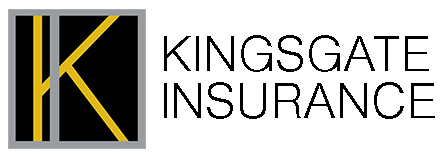Crop Insurance and Cover Cropping
Content written by Chelsea Heatheringtong, Kingsgate Insurance Farm & AG Specialist.
Insurance Perspective on Cover Cropping: What current discounts are available for cover crop use?
Crop insurance premium support is a benefit available to qualifying cover crops.
During the 2022 crop year the premium support was $5 per acre. In September Mike Naig, the Iowa Secretary of Agriculture, announced the Iowa Department of Agriculture and Land Stewardship (IDALS) will again offer the crop insurance discount program. This program is for farmers and landowners who plant fall cover crops followed by a spring-planted cash crop.
How the program works with your crop insurance:
- Sign up begins 12/1.
- Farmers are encouraged to apply after their cover crop seeding is completed. Doing so would help prevent changes to the application in case there are changes to fields seeded.
- Get your application in by January 27, 2023, to be assessed for discount program eligibility.
- Once IDALS verifies the eligibility of applications, applicants will be notified.
- IDALS sends that list of eligible applications to the USDA Risk Management Agency, known as RMA.
- RMA works with the Approved Insurance Providers (AIPs) and the incentive is applied to crop insurance invoices.
- Participants can expect to receive their normal crop insurance premium invoice with the incentive applied.
What is the relationship between conservation and crop insurance?
Just last week I read an article in Wallace’s Farmer that suggested growing Iowa farm profit with milkweeds. In 2018 an ISU study estimated 12% of Iowa’s corn and soybean acres lost over $40/acre annually and 40 lbs./acre of nitrogen. Iowa’s made up of 23 million acres, so this breaks down to about 2.7 million acres losing money, totaling around $108 million/year.
The Iowa Monarch Conservation Strategy proposes taking unprofitable areas out of cultivation and making them monarch and milkweed growing areas. Most Iowans know that our population of monarch butterflies has decreased quite dramatically over the past few decades. A large contributor is the loss of milkweed plants as monarchs will only lay eggs on these specifically and they serve as the initial food source for the larvae.
ISU surveyed study areas of an Ogden farm where marginal acres were converted from unprofitable corn and soybeans into native perennial vegetation. Judging from the input costs and yields in those areas it was apparent that the farmers made more money by not farming them. The small areas were wet spots on this specific farm but other underproducing areas on other farms could include hillslopes, floodplains, old building lots, compacted areas, etc.
If a farmer chose to incorporate this practice, crop insurance would be positively affected as each year’s production contributes to the Actual Production History (APH) rating. Better yields mean better insurance rates! Conservation is positively affected as well when milkweeds are established, giving monarchs the chance to repopulate. Another couple wins on the conservation front are less machinery use and less chemical use with this practice.
Crop Insurance is something that over 90% of Iowa’s farmers use while cover crops have been adopted by under 5%. How can pairing crop insurance with cover crop use help benefit both industries?
For a farm to be sustainable it must also be profitable. Farm owners, like any business owner, aim to remain profitable through the good years and the bad. To do so, you use two tools.
- Risk mitigation – to prepare for and lessen the effects of threats.
- Risk management – to identify, assess, and control risks to the capital and earnings.
An example of risk mitigation is cover cropping. Threats such as soil erosion can be lessened by planting a cover crop, keeping the productive capacity of that farm ground intact. An example of risk management is crop insurance. Weather, yields, and prices all affect the bottom line and can be adjusted for with the right insurance policy. Use these two tools together for the best possible outcome.
Crop insurance encourages good farming practices, such as cover cropping, with their rating and underwriting systems. Farmers who develop a strong Actual Production History (APH) earn lower premium rates since they average higher yields. Lower premiums encourage risk mitigation such as cover cropping to build strong production histories with higher yields.
Something else to note, the crop insurance program allows policy holders to plant cover crops and hay and graze them without penalty if they are terminated by the appropriate termination date. Just another way to use that ground for more!
Resources:
https://www.cleanwateriowa.org/cropinsurancediscount
https://www.farmprogress.com/conservation/growing-iowa-farm-profit-milkweeds





Leave a Reply
Want to join the discussion?Feel free to contribute!